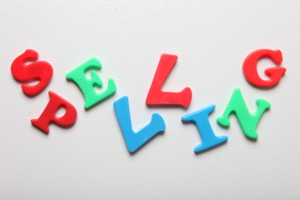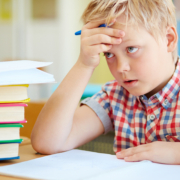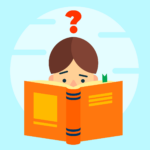The term “learning disability” is expressed frequently between concerned parents, educators, and anyone who feels they have one. You may know of a relative, a friend’s child, or even your own child who has been diagnosed during their school years. The LD Resources Foundation¹ states on their website that 8-10% of children under 18 have some form of a learning disability. One of the top 5 most common is Dyslexia, often thought of as a disability in reading. When looking for a cause of symptoms it is important to determine if the person has strong functional vision skills or if a deficit is causing learning problems mimicking Dyslexia.
What is Dyslexia?
What do you know about Dyslexia? Common knowledge leads us to understand it is a problem with reading. While that is true there is a little more to it than that. This definition posted on the Edublox Online Tutor Website² brings to light visual dyslexia.
“Dyslexia is considered to be a neurological disorder in the brain that causes information to be processed and interpreted differently, resulting in reading difficulties.
The terms visual dyslexia and auditory dyslexia are often used by scholars to describe two main types of dyslexia. Visual dyslexia, also called surface dyslexia, dyseidetic dyslexia, or orthographic dyslexia, is a subtype of dyslexia that refers to children who struggle with reading because they have problems remembering and discriminating visual gestalts.”

What are common symptoms of Dyslexia?
Not every person with Dyslexia will present with symptoms identically, though they often have symptoms that affect 3 skill sets. Someone with Dyslexia typically struggles with phonological awareness, verbal memory, and verbal processing speed. The Optometrists Network³ wrote an article giving a detailed description of what Dyslexia is and how it presents in different age groups. This is not an exhaustive list, but it does demonstrate how the person is impacted by the 3 symptoms mentioned above.
- Under Age 5
-
-
- Recognizing letters and their sounds
- Getting the letters confused when saying a word
- Learning frequently used word progressions (ex. Days of the week)
-
- Age 5-13
-
- Saying a word backwards/switching letters when reading (ex. saw vs. was)
- Incorrectly saying/writing letters and numbers that look similar (ex. p vs. q and 2 vs. 5)
- Remembering math facts
- Remembering spelling rules
- Following directions in the correct order
-
- Age 13 and Above
-
- Reading out loud and/or below grade level
- Recalling the main ideas of a story/comprehension
- Understanding jokes
- Managing time
-
Can functional visual problems present similarly to Dyslexia?
Before beginning a formal assessment to determine if someone has Dyslexia, it is recommended they undergo a specialty vision examination to evaluate the 3 areas of visual functioning: integrity of the visual pathway, visual efficacy, and visual information processing. Oftentimes binocular vision problems (especially convergence insufficiency) can be confused with Dyslexia or may accompany the diagnosis. Those symptoms, taken from Dyslexia and the Vision System⁴, are listed here:
- Reversing letters like “b” and “d”
- Skipping words or entire sentences when reading
- Struggles to copy off the board
- Words look blurry or move
- Has trouble spelling
- Low reading comprehension
- Reading slowly
- Becomes easily tired and eyes feel strained when reading

Can Vision Therapy help?
Yes! In many circumstances where the person is diagnosed with a vision issue they can work on various skills in Vision Therapy to improve the brains’ ability to coordinate the eye muscles and the connection between the eyes and the brain. Several patients begin therapy citing struggles with reading. We know the importance of reading, writing, memory work and being able to plan ahead as well as several other life skills. A few activities that may help get the eyes into the proper alignment and help the person know where they need to look include: reading charts in a certain way, using a set of special blocks moved in different patterns to form words, and using specific glasses to fuse 2 images together to create 1 image with clarity and depth. It can be a life changing experience to receive Vision Therapy amidst school, work, or life struggles.
If you or someone you know would like to schedule a functional vision exam feel free to contact us by phone at 402-502-0043 or send an email to [email protected].
Resources:
The Top 5 Most Common Learning Disabilities and their Symptoms¹
Visual Dyslexia: What It Is and How to Treat It²
https://www.edubloxtutor.com/visual-dyslexia/
Does My Child Have Dyslexia³
https://www.optometrists.org/childrens-vision/vision-for-school/dyslexia/
Dyslexia and the Visual System⁴



